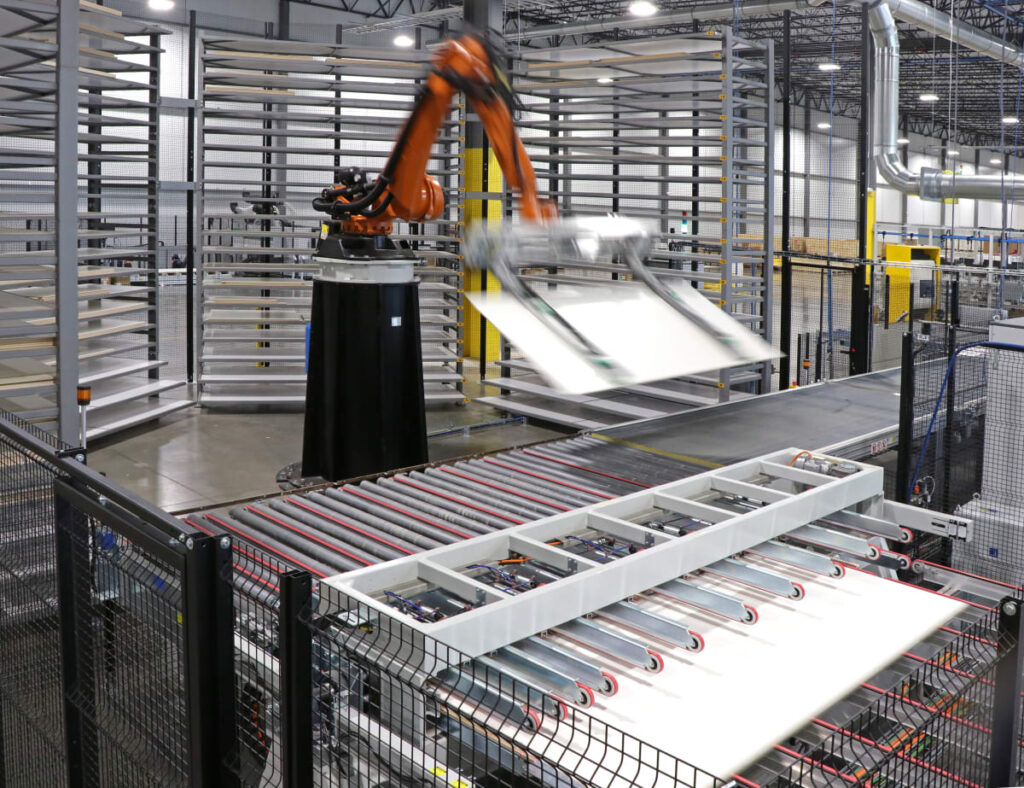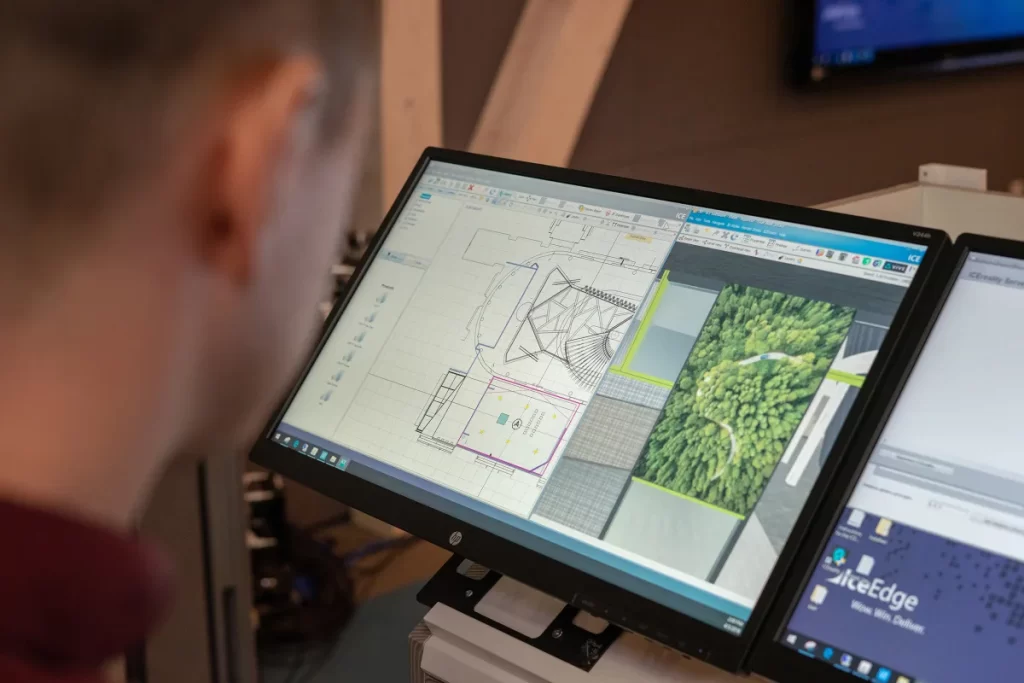According to experts, combining modular construction with BIM improves productivity, efficiency, and collaboration.
Construction is falling behind.
According to research from McKinsey, in America it’s the second-least digitized sector, lagging only behind agriculture.
It’s a surprising statistic, when you consider the benefits of adopting digital transformation tools like Building Information Modeling (BIM) for building projects.

Like: better project and material planning which leads to less waste, a more collaborative process throughout the lifecycle of a project, lower costs, and shortened timelines.
Conventional construction can take cues from the manufacturing sector, which has more readily invested in digitization. And also learn a thing or two from off-site or industrialized construction — an early adopter, and now longtime user, of BIM.
With modular or Design for Manufacturing and Assembly (DfMA), building elements (everything from walls and floors to casework and network cabling) are designed using BIM. Then they’re produced in a factory and assembled, rather than constructed, at a job site, explains Richard Meacham, director of design integration at DIRTT.

“With DfMA you extend the efficiency that BIM introduces to a project, because prefabrication and assembly is both faster (and often less expensive) than on-site construction, as well as more sustainable, since precise manufacturing produces less waste,” Meacham says.
The results aren’t cookie cutter though.
“Through computational power [BIM], we can pre-design unique connections,” Meacham says, allowing for nearly unlimited customization. “The more data you pack into it, the more you can get out of it.”
The benefits of BIM are well established. The problem in more conventional construction is low adoption rates, says Johnny Fortune, National BIM Program Director at the National Institute of Building Sciences (NIBS).
This is why NIBS has launched a digital evolution task force in the form of a National BIM Program. The non-profit’s goal is to drive greater digital transformation in the building sector, specifically through increased use of BIM. “We’re hoping for a 10% increase in adoption among owners over the next two years,” says Fortune.
If construction can meet the National BIM program’s adoption goals, BIM could spark a digital transformation revolution in the sector — and address some of construction’s key challenges such as low productivity and labor shortages.

Benefits of BIM adoption
There’s no lack of available BIM technology, so why isn’t use more widespread in conventional construction?
It’s mostly aversion to change and concerns about risk, which are holding the industry back, says Fortune. For instance, on-site contractors who are “very skilled at masonry or gypsum board or painting,” are less accustomed to using advanced tech.
Meanwhile some project owners — including developers, CRE, federal agencies, and more — are worried they’ll be susceptible to future liability if, say, “something’s missing from the model or something’s not modeled properly…and then the model accuracy comes into question.”
(But of course, traditional construction documents aren’t exempt from potential risk and liability as well.)
And the reward of BIM adoption far outweighs concerns like these, Fortune says.

Boosted productivity
First, there’s data-related benefits that boost productivity.
BIM is a container for data. And so we’re really trying to drive good data… it’s accessible, it’s usable, it’s accurate, it’s complete, it’s reliable, and relevant.
JOHNNY FORTUNE, NATIONAL BIM PROGRAM DIRECTOR, NATIONAL INSTITUTE OF BUILDING SCIENCES
He goes on to explain, “good data gets passed from one stakeholder to another without loss of fidelity, and is able to be used in the planning, design, construction, and operation phases of any given project.”
Without access to this type of data, a lot of project information is wasted and doesn’t make it to everyone involved, or has to be recreated, says Fortune. “So we have people creating the same information at different points in a project’s life cycle…We have to eliminate that waste first to realize productivity.”

Enhanced collaboration
Then there’s also collaboration benefits, since all stakeholders now have access to the construction model (and all that good data) as it evolves throughout the course of a project.
To enable collaboration further — even for those using different software — Fortune says, “an important tenet of the National BIM program is that we are pushing for open data standards,” that support data integrity and interoperability.
For example, imagine designers, manufacturers, and contractors are all using different software. If they all adhere to open standards, any data they share would be compatible across any platform.
Fortune uses the analogy of smartphones with different operating systems. “Ultimately, we can still text each other…because there’s an underlying set of protocols that developers adhere to.”
Productivity and collaboration gains are just the beginning, when you consider the benefits of digital transformation via BIM, says Fortune.
“Every initiative that we want to move forward in this industry — initiatives related to carbon reduction, energy conservation, sustainability, resiliency — all these require some level of good data to achieve these goals.”
And BIM enables them all.
